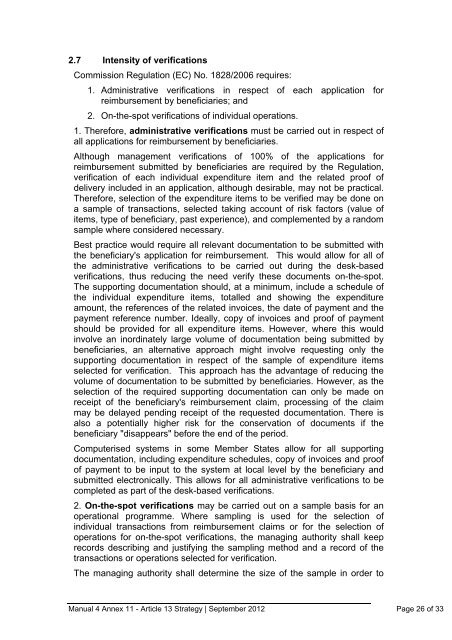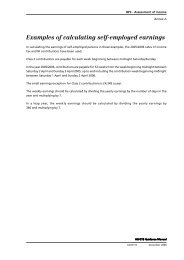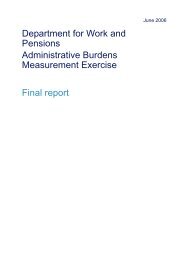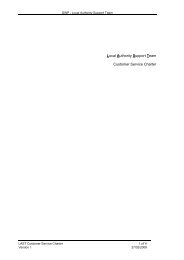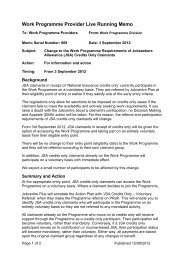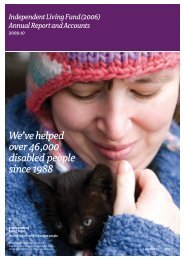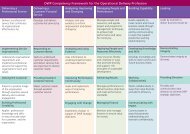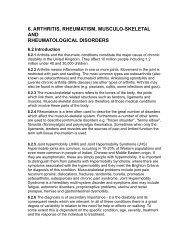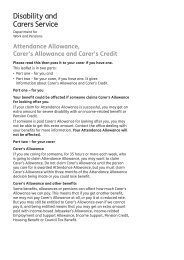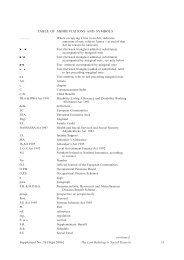ESF Guidance Manual 4 Annex 11: Article 13: ESF Verification ...
ESF Guidance Manual 4 Annex 11: Article 13: ESF Verification ...
ESF Guidance Manual 4 Annex 11: Article 13: ESF Verification ...
Create successful ePaper yourself
Turn your PDF publications into a flip-book with our unique Google optimized e-Paper software.
2.7 Intensity of verifications<br />
Commission Regulation (EC) No. 1828/2006 requires:<br />
1. Administrative verifications in respect of each application for<br />
reimbursement by beneficiaries; and<br />
2. On-the-spot verifications of individual operations.<br />
1. Therefore, administrative verifications must be carried out in respect of<br />
all applications for reimbursement by beneficiaries.<br />
Although management verifications of 100% of the applications for<br />
reimbursement submitted by beneficiaries are required by the Regulation,<br />
verification of each individual expenditure item and the related proof of<br />
delivery included in an application, although desirable, may not be practical.<br />
Therefore, selection of the expenditure items to be verified may be done on<br />
a sample of transactions, selected taking account of risk factors (value of<br />
items, type of beneficiary, past experience), and complemented by a random<br />
sample where considered necessary.<br />
Best practice would require all relevant documentation to be submitted with<br />
the beneficiary's application for reimbursement. This would allow for all of<br />
the administrative verifications to be carried out during the desk-based<br />
verifications, thus reducing the need verify these documents on-the-spot.<br />
The supporting documentation should, at a minimum, include a schedule of<br />
the individual expenditure items, totalled and showing the expenditure<br />
amount, the references of the related invoices, the date of payment and the<br />
payment reference number. Ideally, copy of invoices and proof of payment<br />
should be provided for all expenditure items. However, where this would<br />
involve an inordinately large volume of documentation being submitted by<br />
beneficiaries, an alternative approach might involve requesting only the<br />
supporting documentation in respect of the sample of expenditure items<br />
selected for verification. This approach has the advantage of reducing the<br />
volume of documentation to be submitted by beneficiaries. However, as the<br />
selection of the required supporting documentation can only be made on<br />
receipt of the beneficiary's reimbursement claim, processing of the claim<br />
may be delayed pending receipt of the requested documentation. There is<br />
also a potentially higher risk for the conservation of documents if the<br />
beneficiary "disappears" before the end of the period.<br />
Computerised systems in some Member States allow for all supporting<br />
documentation, including expenditure schedules, copy of invoices and proof<br />
of payment to be input to the system at local level by the beneficiary and<br />
submitted electronically. This allows for all administrative verifications to be<br />
completed as part of the desk-based verifications.<br />
2. On-the-spot verifications may be carried out on a sample basis for an<br />
operational programme. Where sampling is used for the selection of<br />
individual transactions from reimbursement claims or for the selection of<br />
operations for on-the-spot verifications, the managing authority shall keep<br />
records describing and justifying the sampling method and a record of the<br />
transactions or operations selected for verification.<br />
The managing authority shall determine the size of the sample in order to<br />
<strong>Manual</strong> 4 <strong>Annex</strong> <strong>11</strong> - <strong>Article</strong> <strong>13</strong> Strategy | September 2012 Page 26 of 33


